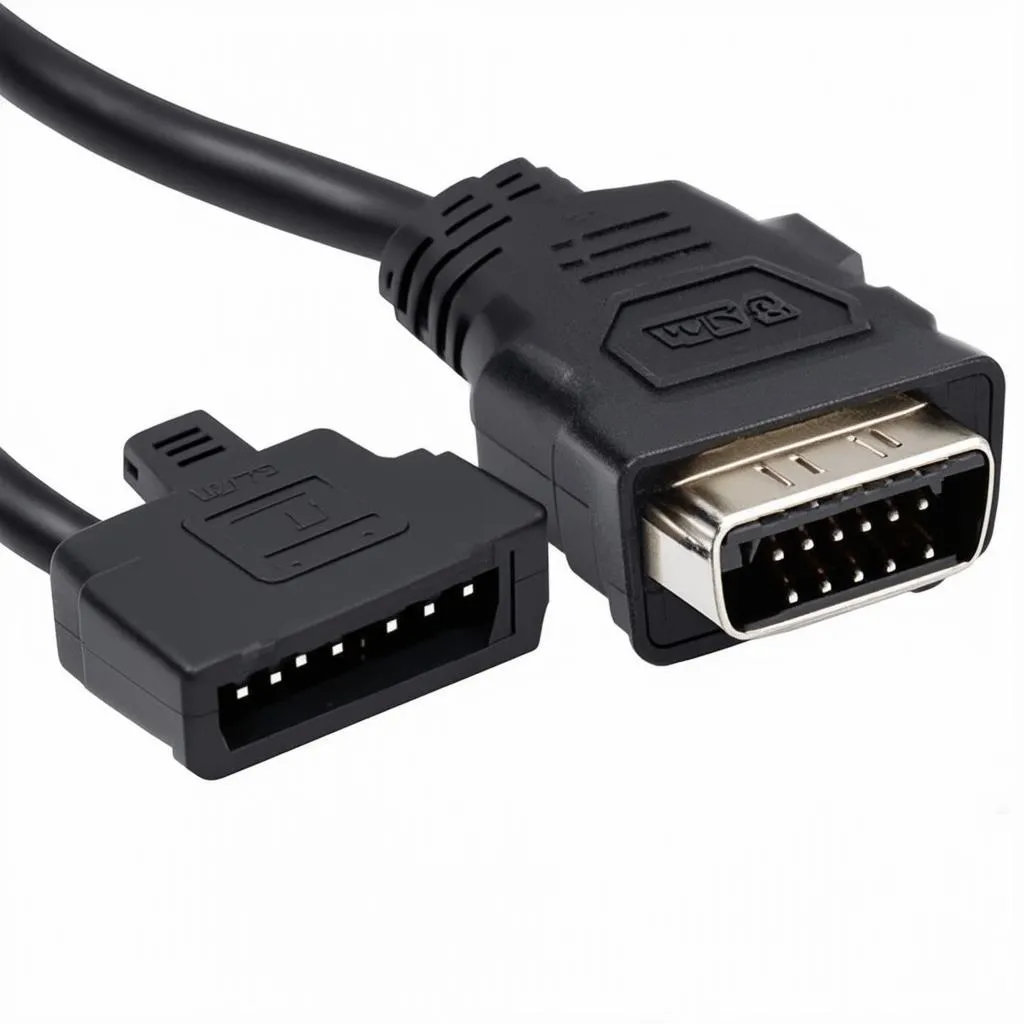VCDS steering angle sensor calibration is a crucial procedure for maintaining the proper function of your vehicle’s Electronic Stability Program (ESP), steering assist systems, and other safety features. A misaligned sensor can lead to a variety of issues, from a constantly illuminated ESP light to improper functioning of adaptive cruise control and lane assist. This guide will walk you through the process of calibrating your steering angle sensor using VCDS, a powerful diagnostic tool.
Understanding the Steering Angle Sensor (G85)
The steering angle sensor, often referred to as G85 in Volkswagen group vehicles, is a critical component in modern vehicles. It measures the angle of the steering wheel and transmits this information to various control units. This data is used for a multitude of functions, including:
- Electronic Stability Program (ESP): The ESP system relies heavily on steering angle sensor data to determine if the vehicle is yawing (rotating around its vertical axis) and to apply corrective braking forces to maintain stability.
- Steering Assist Systems: Electric power steering systems utilize this data to adjust the level of assistance provided to the driver.
- Adaptive Cruise Control (ACC): The steering angle is used to help the ACC system maintain a safe following distance and stay within the lane.
- Lane Assist Systems: These systems use steering angle information to detect lane departures and provide warnings or corrective steering inputs.
When is VCDS Steering Angle Sensor Calibration Necessary?
Several situations may require a steering angle sensor calibration, including:
- Steering Wheel Alignment or Replacement: Any adjustments to the steering wheel’s position necessitate recalibrating the sensor.
- Steering Rack Replacement or Repair: Similar interventions require calibration to ensure the sensor accurately reflects the steering wheel’s angle.
- ESP Light Illumination: A persistent ESP warning light can indicate a misaligned steering angle sensor.
- Erratic Steering Behavior: Unusual steering feel or unexpected assistance can be a symptom of a faulty or miscalibrated sensor.
- Aftermarket Suspension Modifications: Changes to the vehicle’s suspension geometry may require a recalibration.
How to Perform VCDS Steering Angle Sensor Calibration
Calibrating the steering angle sensor using VCDS is a relatively straightforward process. However, accuracy is paramount, so follow these steps carefully:
- Connect VCDS: Plug the VCDS cable into your vehicle’s OBD-II port and connect it to your laptop.
- Turn on the Ignition: Turn the ignition on without starting the engine.
- Open VCDS Software: Launch the VCDS software on your laptop and select the correct vehicle model.
- Select Control Module: Choose “Steering Wheel Electronics” or the corresponding module for your vehicle.
- Basic Settings: Go to “Basic Settings” or “Adaptation.”
- Steering Angle Sensor Calibration: Select the “Steering Angle Sensor (G85) Calibration” option.
- Follow On-Screen Instructions: The VCDS software will provide step-by-step instructions, which typically involve centering the steering wheel and confirming the calibration.
- Save and Exit: Once the calibration is complete, save the changes and exit the VCDS software.
Common Issues and Troubleshooting
While VCDS steering angle sensor calibration is generally uncomplicated, you might encounter some issues:
- Calibration Fails to Complete: This could indicate a faulty sensor, wiring problem, or other underlying issues. Consult a qualified technician for further diagnosis. steering angle sensor g85 calibration vcds provides further insight into this process.
- ESP Light Remains On: Even after calibration, if the ESP light persists, it may point to a different problem. Scanning for fault codes using VCDS can pinpoint the cause.
- Incorrect Calibration: If the calibration is not performed accurately, it can lead to erratic steering behavior. Repeat the calibration process, ensuring the steering wheel is perfectly centered.
Benefits of Proper Calibration
Properly calibrating the steering angle sensor is essential for maintaining the safety and performance of your vehicle. It ensures:
- Optimal ESP Functionality: Accurate steering angle data is crucial for the ESP system to function correctly and prevent loss of control.
- Precise Steering Assist: Correct calibration ensures the steering assist system provides the appropriate level of support.
- Reliable Driver Assistance Systems: Accurate sensor data allows features like ACC and lane assist to operate reliably and safely.
Conclusion
VCDS steering angle sensor calibration is a vital procedure that contributes significantly to your vehicle’s safety and performance. By following the steps outlined in this guide and how to use vcds to fix steering angle sensor, you can ensure the optimal functioning of your vehicle’s electronic systems. vcds steering angle sensor offers additional information for those seeking a deeper understanding. Don’t underestimate the importance of this calibration – a correctly calibrated sensor can make a significant difference in how your vehicle handles and responds in critical situations. vw steering angle sensor reset vcds focuses specifically on Volkswagen vehicles. For any persistent issues or concerns, consult a qualified automotive technician. steering angle sensor calibration vcds provides a more concise guide on this topic.
FAQ
- How often should I calibrate the steering angle sensor? Typically, calibration is needed after any steering or suspension work affecting the steering wheel’s position.
- Can I calibrate the steering angle sensor without VCDS? While some vehicles might have a self-calibration procedure, using VCDS offers more precise control and diagnostic capabilities.
- What if the ESP light stays on after calibration? This may indicate another issue; further diagnosis with VCDS is recommended.
- Is it safe to drive with a miscalibrated steering angle sensor? Driving with a miscalibrated sensor can affect your vehicle’s stability and safety systems, so it’s best to address the issue promptly.
- How much does a professional VCDS steering angle sensor calibration cost? The cost varies depending on the location and service provider but is typically a relatively affordable procedure.
- What are the symptoms of a faulty steering angle sensor? Symptoms can include an illuminated ESP light, erratic steering behavior, and malfunctioning driver assistance systems.
- Can a bad steering angle sensor cause the car to pull to one side? While a miscalibrated sensor can contribute to this, a pulling sensation is often caused by other factors like tire pressure or alignment issues.
Need support? Contact us via Whatsapp: +1 (641) 206-8880, Email: [email protected] or visit us at 276 Reock St, City of Orange, NJ 07050, United States. Our customer support team is available 24/7.



